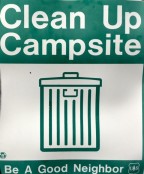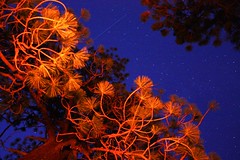
A wisp of Santa Cruz Island floats on the horizon in Channel Islands National Park.
The excerpt below details an island sea cave in neighboring Ventura County, not the cave above on the mainland coast in Santa Barbara County.
The description is, nevertheless, fitting in its emotive explication of natural place. And the words may relate the ambience filling any cave found along this stretch of the Pacific seashore.
The authors convey the auditory and visual sensory dynamics inherent in a sea cave, which charge them with an energy and feeling of life most unlike the still quiet of a mountain cave.
The cave itself lies on the boundary between land and ocean. The incessant sound of ocean waves against the rock fills the cave with a rhythmic pounding.
Even though the environment of the cave has changed with the erosion of the sand floor that was present 20 years ago, the space still retains characteristics of a liminal zone where one might focus attention on cult activities.
Natural formations in the cave, such as ledges and rock shelves, may have provided surfaces for setting items used in ceremony or ritual, or for sitting or lying down.
…
The natural geological formation of the cave interior may be viewed as similar to that of a whale. The large central portion of the space tapers towards the rear (or tail) and widens at the entrance (or mouth).If one expands the observation of the cave environment to include its visual and auditory scope, it is a kinetic and changing space.
It appears to be ‘alive’ as witnessed in a variety of lighting and moisture conditions which affect the illumination and coloring of the walls.
The varying sounds of the surf, reflecting tidal and weather conditions with waves crashing onto the entrance or just outside on adjacent rocks make for constantly changing sounds inside the cave.
Depending on the surf conditions, the space acts as a natural amphitheater, magnifying the sounds. At various times of the day, the sun reflects light which plays across the walls and ceiling of the cave.
When these factors are combined with the sounds, one could imagine being inside a wave or perhaps the belly of a whale.
One’s auditory experience often includes the sounds of marine mammals on nearby beaches as well as the sounds of shore birds including gulls and cormorants.
— Cave of the Whales: Rock Art On San Nicolas Island
Kathleen Conti, William D. Hyder, Antoinette Padgett
SantaBarbaraBotanicGarden.org




















